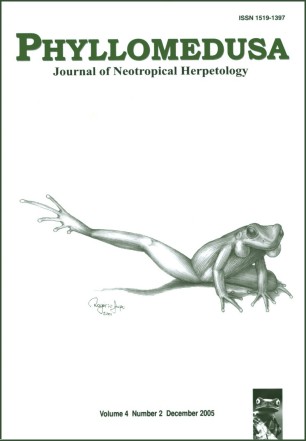Body size, reproductive biology and abundance of the rare pseudoboini snakes genera Clelia and Boiruna (Serpentes, Colubridae) in Brazil
DOI:
https://doi.org/10.11606/issn.2316-9079.v4i2p111-122Keywords:
Serpentes, Colubridae, Clelia, Boiruna, abundance, body size, conservation, reproductionAbstract
Pseudoboini snakes of the genera Clelia and Boiruna are apparently rare in nature and certainly rare in collections. This work presents data on body size, reproduction and abundance of five Brazilian species of these genera, in the largest collection of snakes in Latin America, the Instituto Butantan. Despite scarcity of data, follicular cycle seems to be continuous in most species, except Clelia rustica, which occurs in highlands. Females are larger than males in all species, and fecundity is low when compared to other pseudoboini. Abundance is very low for all species even considering 100 years of collecting, and it is decreasing in recent decades when compared to other snakes (Bothrops jararaca, Oxyrhopus guibei, O. clathratus, Philodryas patagoniensis, Sibynomorphus mikanii, and Spilotes pullatus). The studied species present at least five traits of commonly threatened species and require more attention in researches and conservation policies.Downloads
Download data is not yet available.
Downloads
Published
2005-12-01
Issue
Section
Articles
License
All material originally published in Phyllomedusa belongs to Escola Superior de Agricultura Luiz de Queiroz - Universidade de São Paulo. All contents are under a license of Creative Commons BY-NC-ND.How to Cite
Pizzatto, L. (2005). Body size, reproductive biology and abundance of the rare pseudoboini snakes genera Clelia and Boiruna (Serpentes, Colubridae) in Brazil. Phyllomedusa: Journal of Herpetology, 4(2), 111-122. https://doi.org/10.11606/issn.2316-9079.v4i2p111-122



 Impact Factor (JCR): 0.600
Impact Factor (JCR): 0.600 CiteScore: 1.0
CiteScore: 1.0